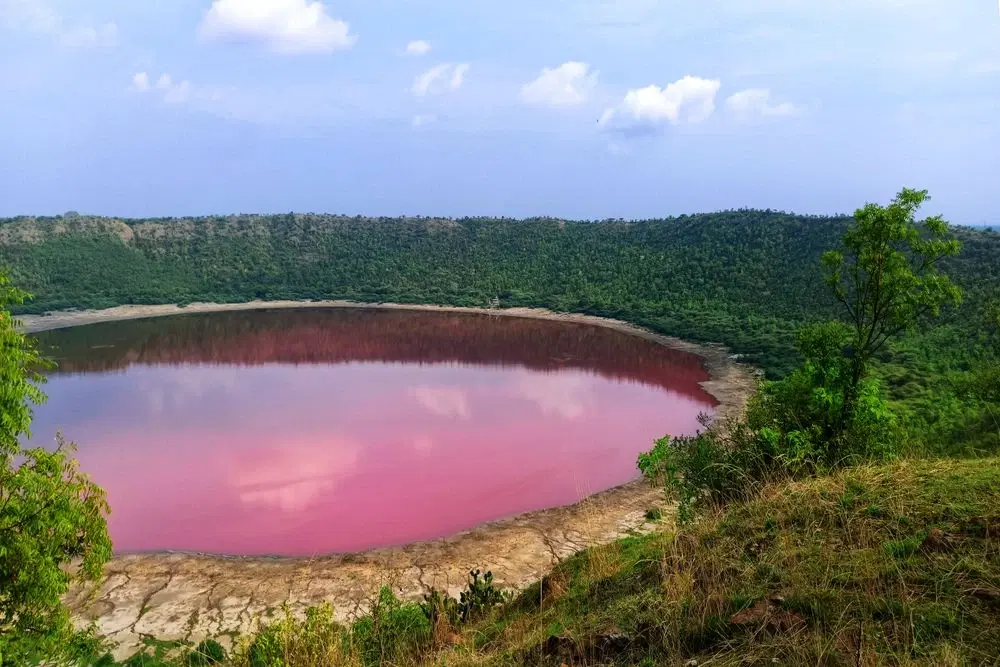
Hotels
•03 min read

Lonar Crater Lake, a rare geological marvel, was formed by a meteorite impact and sits nestled in the heart of Maharashtra. Its unique formation and global significance have captured the attention of scientists, travelers, and nature lovers alike. In this post, we answer frequently asked questions about this magnificent site—covering its formation, cultural history, biodiversity, and why it remains an unmissable destination for those exploring India’s geological heritage.
About 50,000 years ago, a meteorite impact carved out the Lonar Crater Lake, making it one of the only hyper-velocity impact craters in basaltic rock in the world. The lake's saline and alkaline waters add to its enigma, providing a unique habitat that is of immense scientific interest. The study of its unique water chemistry helps scientists better understand the processes behind meteorite impacts and planetary formation.
This impact site is recognized as a National Geo-heritage Monument and is pivotal in the study of planetary geology. When compared to other unique lakes in India and volcanic crater lakes worldwide, Lonar stands out for its rare formation process and scientific allure. Its status as a meteorite impact lake solidifies its place among the natural wonders of Maharashtra.
Lonar Crater Lake is steeped in ancient history and sages’ lore. The lake is featured in Hindu mythology and is mentioned in historical texts, underscoring its long-standing cultural significance. Surrounding the lake are temples like the Daityasudana Temple, whose intricate architecture and deep-rooted legends connect the site to India’s rich cultural past.
Legends and mysteries shroud Lonar Lake, from tales of a demon named Daitya to the surprising pink hue seen in 2020. This unexpected color change spurred further interest among locals and global audiences, fueling myths about its spiritual and mystical properties. The lake’s story is as layered as its history, blending natural phenomena with rich cultural narratives.

The ecosystem of Lonar Lake is remarkably unique. Its saline–alkaline environment nurtures a variety of microbial life, including nitrogen-fixing and methylotrophic microorganisms that are rarely found elsewhere. Moreover, the flora and fauna surrounding the lake thrive in this distinctive habitat, welcoming migratory birds and supporting several endemic species, which contribute to its ecosystem diversity.
Conservation of Lonar Crater Lake is a priority given its ecological importance. Efforts to preserve its biodiversity include monitoring pollution levels and managing human activity around the lake. These measures are crucial in protecting its unique microbial life and the broader ecosystem, emphasizing the need to maintain its pristine condition for future generations.
Lonar Crater Lake offers a variety of experiences for every traveler. Accessible by road from major cities in Maharashtra, the site is perfect for an adventurous day trip. Visitors can enjoy trekking, birdwatching, and photography in the serene surroundings. The natural trail around the crater provides not only breathtaking views but also a chance to observe its unique geological formations up close.
Lonar Lake’s appeal transcends academic interest. It mesmerizes geologists with its meteorite impact origins, enchants historians with its ancient temples and lore, and delights nature enthusiasts with its vibrant ecosystem. When compared to other geological sites in Maharashtra and India, Lonar stands out as a harmonious blend of natural splendor and cultural depth.
Did you know? In 2020, Lonar Lake turned pink due to a sudden increase in salinity and the proliferation of halophilic (salt-loving) microorganisms. This rare phenomenon caught global attention and highlighted the lake's dynamic ecosystem.

Lonar Crater Lake is the only hyper-velocity impact crater in basaltic rock globally, formed by a meteorite impact, and is a National Geo-heritage Monument.
The lake's saline-alkaline nature, microbial diversity, and occasional pink color change make it a subject of scientific curiosity and mystery.
Lonar is famous for its geological significance, ancient temples, unique biodiversity, and its status as a natural wonder of Maharashtra.
The lake turned pink due to increased salinity and the growth of halophilic microorganisms, a rare ecological phenomenon.
Lonar Lake was formed approximately 50,000 years ago by a meteorite impact.
Lonar Crater Lake stands as a testament to Earth's geological and ecological diversity, blending natural wonder with cultural heritage seamlessly. From its dramatic meteorite impact origins to its thriving ecosystem and ancient temples, the lake offers a captivating narrative that spans both science and history. Exploring this natural marvel not only deepens one’s understanding of our planet's past but also inspires future journeys across India’s rich geological landscape.